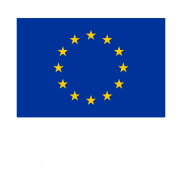PatchFoundry

What is the Patch Foundry?
The OPZuid ‘Patch Foundry’ project is a cooperation between TracXon, Holst Centre, Salvia Bioelectronics, BOM (Brabantse Ontwikkelings Maatschappij) and Elitac Wearables and is funded by Stimulus OPZuid and Co-funded by the European Union.
The goal of this project is to contribute to accelerating the health transition by creating a complete patch factory, to facilitate the need of a production facility in Brabant for health related printed electronics devices made by companies, SMEs and start-ups that are also well represented in Brabant.
The role of Elitac Wearables is to (re-)design and produce one of our meaningful wearables with the promising technology of printed electronics, to make a wearable more comfortable and to reduce the cost price of such devices.
Interested? Contact us to find out more
Background
Introduction of innovative wearable patches and other device archetypes into the healthcare system is limited due to lacking production capacity for high volume manufacturing at a quality level, which meets European Medical Device Regulations and CE certification standards6. The production process and assembly often still contains manual work and so, a high capacity (e.g. volumes larger than 10.000 pieces) at sufficient quality can often not be realized. This impedes large scale manufacturing at medical device level quality. More importantly, some production steps are often done outside of Europe, not only involving complex logistics but also making Europe vulnerable to major disruptions in manufacturing caused by e.g. pandemics or political reasons.
The solution: a Health Patch Foundry
This project has the ambition to resolve the major bottle neck towards implementation and production of remote wearable solutions for across the healthcare cycle, starting with prevention to therapy. In particular, the project objectives are:
- To create an open access patch foundry for mass printed electronics located in Brabant;
- To demonstrate capability of the pilot line on pre-selected use-cases;
- To expand the ecosystem to more Dutch (and European) parties and generate a sustainable service business model.

Examples of wearable technologies and innovations. Top row: TracXon technologies; middle row: Salvia Bioelectronics implantable device, Elitac Wearables KneeWear device, Holst Centre Nighthawk wearable patch, bottom row: Glanum Medical wearable patch, Onera Health wearable patch, Philips wearable patches (Philips Healthdot and Biotelemetry patch).

Consortium partners
Elitac Wearables (Systems B.V.) works as a wearable development partner specialising on development of haptic feedback design and integration, electronic hardware, integration of electronics into textile, prototyping and coordination and scaling of production of the final product. Elitac Wearables sells standard, off the shelf haptic feedback R&D, rapid prototyping hardware and custom made tactile displays. This hardware is used by universities, research centers and commercial organisations worldwide. Elitac Wearables develops all software and hardware for this product in house, and values its relationships with suppliers to be able to manufacture new high quality products rapidly. Elitac Wearables develops wearables in the domains (1) safety and protection (USPs: lower cognitive load, better performance in high pressure environment) and (2) healthcare / medical devices (USPs: active feedback, sensor integration and replacement or enhancement of senses)
TracXon B.V., founded in 2021, produces hybrid flexible electronic products through roll-to-roll printing and component assembly. The company is a spin-out of TNO Holst Center and has unique knowledge in the field of screen printing, lamination, curing and soldering. This knowledge is necessary to deliver the patches on a large scale with the right quality. TracXon has set itself the goal of translating “printed electronics” prototypes into makeable/scalable processes that they carry out themselves and deliver to the health care market. TracXon transforms Hybrid Printed Electronics evolving a niche technology to a mainstream cradle-to-cradle sustainable manufacturing technology through continuous process and product innovation. The design rules used by TracXon are based on the latest “state-of-the-art” processes for printed electronics.
Salvia BioElectronics B.V. is a medical device company that develops a novel therapy for people with severe migraine. Migraine is both very prevalent and highly disabling. Chronic migraineurs suffer on average 18 migraine days every month, preventing them living a normal life. By harnessing the power of the human brain, Salvia aims to bring relief to these people.
The BOM, Brabantse Ontwikkelings Maatschappij (or Brabant Development Agency; noted here as the BOM), is the regional development agency funded by province of Noord Brabant. Sustainable food, a healthy future, climate neutral energy to the development of promising key technologies, the BOM ensures, with the right support and financing, that start-ups contributing to these topics get off to a flying start and can let their ideas grow into scale-ups and innovative SME’s. The BOM collaborates with the Europe Enterprise Network, used for international match making. Hereby they contribute to the innovation program to ensure an acceleration in innovation in the region.
Holst Centre was founded in 2005 by the leading research institutes TNO and imec. The Holst Centre excels in innovations enabling remote patient monitoring in healthcare and its ambition is to be best-in-class research center for medical wearables. Earlier Holst Centre contributed to Philips HEALTHDOT product for unobtrusive Vital Signs measurement.
Reason and importance of participation and specific expertise
- Printed Electronics Technologies (pick and place, bonding, sintering, and interconnection technologies on flexible substrates)
- Benchmarking of Materials: translating application requirements into material requirements, testing and validation
- Cleanroom fabrication: fabrication of very small features (pitch of 50 μm), protected by Patent Applications.
Contact us
If you have any questions about the Patch Foundry project or are interested in partnering with Elitac Wearables for your own project, please leave your details in the form and we will be in touch as soon as possible.



